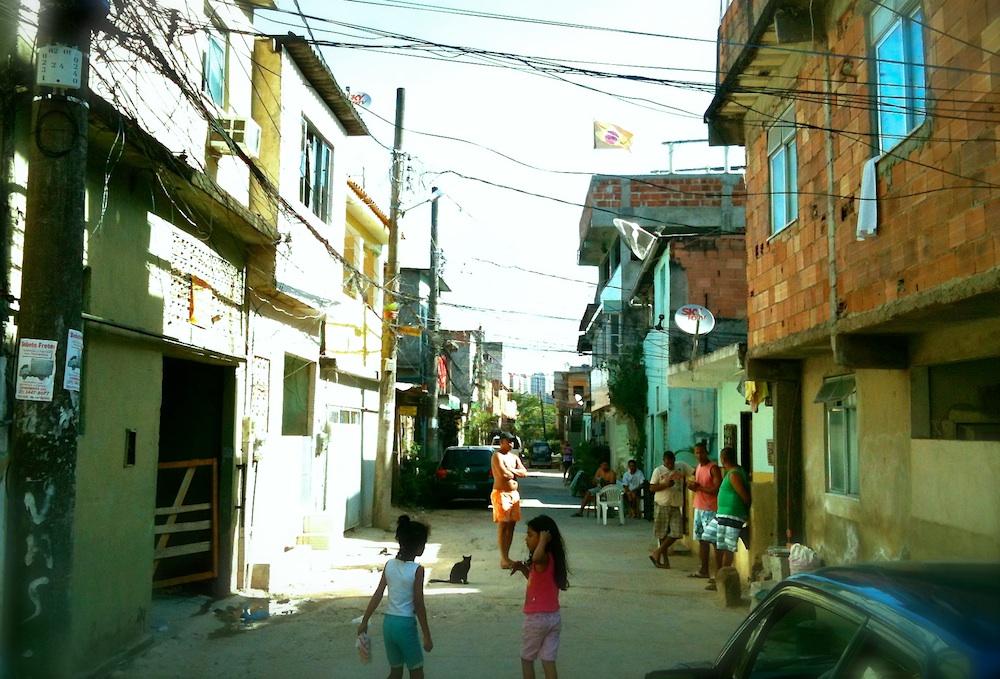A City Planner Responds: What is a Favela?
by Theresa Williamson, Ph.D. in City and Regional Planning and Executive Director of Catalytic Communities
 After fifteen years visiting favelas across Rio on a weekly basis, I still marvel at the creative adaptations of the built environment that favela residents have established over time. “Favelas” are often translated to English as “slums” (i.e. squalor), “shanty-towns” (i.e. precarious building materials), “squatter communities” (i.e. illegal) or “ghettos” (i.e. marginal), when in actuality today only a minority of Rio de Janeiro’s favela communities are characterized by any of these factors.
After fifteen years visiting favelas across Rio on a weekly basis, I still marvel at the creative adaptations of the built environment that favela residents have established over time. “Favelas” are often translated to English as “slums” (i.e. squalor), “shanty-towns” (i.e. precarious building materials), “squatter communities” (i.e. illegal) or “ghettos” (i.e. marginal), when in actuality today only a minority of Rio de Janeiro’s favela communities are characterized by any of these factors.
For one thing, let’s take the notion that favela homes are precarious shacks. According to a recent survey of 6 communities, 95% of favela homes are built of brick, concrete, and reinforced steel. 75% have tile floors. Residents put decades-worth of income and physical labor into the construction and consolidation of their homes. Peek inside and you’ll not only see the basics of electricity, running water and indoor plumbing, but a large-screen television and, in over 44% of cases, a computer.
Actually, what characterizes all favelas is pretty simple. Favelas are:
- Neighborhoods that emerge from an unmet need for affordable housing.
- Established and developed with no outside or governmental regulation.
- Established and developed by individual residents (no centralized or outside ‘developers’).
- Continuously evolving based on culture and access to resources, jobs, knowledge, and the city.
Imagine the incredible diversity of neighborhoods this recipe has produced over 115 years of informal urban settlement in Rio de Janeiro. Today there are over 600 favelas in Rio which range from newer or more challenged communities with slum-like conditions and a desire to resettle, to highly-functioning, vibrant neighborhoods determined to maintain their qualities and continue developing in their own extraordinary ways. Walk around in a favela and you will have an entirely unique experience from one day to the next, even more so in different communities. And this is why Rio’s favelas are incomparable cultural incubators with the potential for transforming Rio de Janeiro into a cultural mecca, should their legacy be appreciated and their future development fostered through empowerment, participatory planning, and provisions to guarantee affordability.
A number of qualities of the built environment in favelas have caught the attention of international planners, architects and sustainability practitioners in recent years. Favelas are places of:
-
- Low-rise, high density development
- Pedestrian orientation
- High use of bicycles & public transportation
- Mixed use (homes above shops)
- Residence close to workplace
- Organic architecture (architecture evolves according to need)
- New urbanism
- Collective action
- Intricate solidarity networks
- Vibrant cultural production
There is an incredible efficiency created through favela-style development. Because neighborhoods are low-rise and high density, encouraging exchange rather than isolation through vertical units, and due to limited financial resources, residents historically have worked together to guarantee everything from daycare to housing. The non-financial investment in the form of exchange and mutual support among residents is as critical, if not more, as financial investment in the form of income, to safeguarding positive outcomes for communities. As Providência’s Maurício Hora says, “There are no beggars in the favela.”
In addition to the aforementioned characteristics, favelas developed through being located to areas of employment, residents’ knowledge of construction (many are construction workers with buillding expertise), numerous legal victories over the years recognizing adverse possession and squatters rights, and provision of public utility services such as electricity and water, which although often substandard is available to individual homes in most favelas today.
Though the favela qualities described are rarely recognized, let alone celebrated, from an urbanist perspective favelas are not only an enormous achievement but a source of inspiration, presenting solutions for sustainable urban development from which we can, and should, learn.
